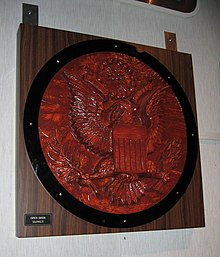From Ancient Greece to the Chinese Spy Balloon: The History of Spying
Just this past month the US has witnessed a slurry of objects within their sky. Of course one of these is the infamous Chinese spy balloon, which was shot down off the shore of South Carolina. But how did we get to the spy balloon, and what techniques did we use before to get valuable intelligence?
Spying or espionage can be traced back to ancient Greece. The Cypteia, or κρυπτεία in its original Greek, was the supreme spy agency of the ancient Greek state of Sparta. It was known for its ruthlessness, and extremely strict code all members had to follow. Not much is known about the Cypteia, as many who wrote of it weren’t even Spartan. What is known is that they were a branch of the military and their main objective was to keep Sparta’s slave population in check, by surveilling over them and killing any who revolted or didn’t follow Spartan laws.
That was only a snippet of the history of spying. By WWI, nations had already been spying on each other over hundreds of years. However, with advancement of technology, spying techniques started to become more unique. During WWII the Nazi military used the Enigma machine, a device that was considered to safeguard even top secret messages. The way the machine works is complicated, but the British, with help from the Polish, were able to crack the ciphers.
By the end of WWII, the world saw two great powers rise, the US and the USSR. During this period known as the Cold War, there was no actual war, if we don’t count proxy conflicts. Examples of spying during the cold war was the transition of guns to cameras. The U-2 was a US spy plane used for aerial reconnaissance. It could take photos of military targets across the USSR and its allies, without the soviets even knowing. When it got discovered, one was shot down in 1960. It caused an international incident and a heightening of tensions.
On the other side, in the communist world, Soviet engineers developed “the Thing”, and no it’s not a shape shifting monster. Instead the “the Thing” (also known as the Great Bug Seal) refers to a listening device gifted to W. Averell Harriman, who was American ambassador to the Soviet Union at the time. The device in question was a wood carving of the Great Seal of the United States, which upon being gifted was hung in the ambassador’s office in the US embassy in Moscow. At the time, Americans were clueless to the fact that inside was an electronic musical instrument, which allowed the Soviets to listen in on confidential meetings within the ambassador’s office. The Americans knew nothing until British operatives in the UK embassy accidentally started listening to conversations from with the US embassy in 1951.
This now leads into today’s current situation, and the infamous balloon. As we all know, the Chinese Spy balloon was shot down after traveling across most of the US. It is still unknown why China would use a flimsy and weak balloon when spacefaring satellites exist. A logical explanation is that the balloon provides an advantage that a satellite just doesn’t have. We still barely have any answers or clues as to why. It is likely that after the wreckage is inspected and reverse engineered we’ll begin to get answers.
